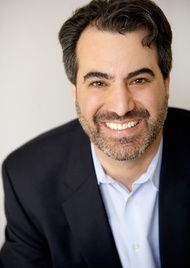By: Ron Pernick

Based on the actions of a very active lame duck Congress last month, we could be moving into a new age of compromise. By crossing both sides of the aisle, President Barack Obama was able to pass comprehensive tax legislation, the repeal of Don't Ask Don't Tell, and the START nuclear arms reduction agreement in the final weeks of the outgoing Congress. As witnessed, compromise can be a very positive and productive thing. But it also has its dark side, where compromise is so skewed it ends up achieving the opposite of what most everyone hoped for or intended. Many point to the Obama healthcare plan as a classic example of where neither side is happy with the end result. Could the same happen for clean energy? Moving into the 112th Congress, we could see a new age where "clean energy" becomes increasingly "dirty." There are growing calls not for a national renewable portfolio standard (RPS), but a so-called clean energy standard that includes clean coal and nuclear power along with renewables. In our book The Clean Tech Revolution and in our work at Clean Edge, senior editor Clint Wilder and I have made a strong case for not including these technologies in the clean-tech taxonomy. But an "all of the above" approach to our energy future may very well be in the offing. The Chinese have been pursuing this approach, spending more on solar PV, wind power, and electric vehicles than just about any other country (and reaping leadership benefits along with their investments), while also supporting the advancement of clean coal and nuclear. It's not a bad approach, and has worked very well for the Chinese, but is it the right one for the U.S.? Only One State RPS Includes Nuclear In our recently released U.S. Clean Energy Leadership Index, Clean Edge tracks states on more than 80 technology, policy, and capital indicators, including RPS. And the states take a pretty clear view on how they feel about nuclear as part of a clean-energy future. Of the 29 states with an RPS, only one, Ohio, includes nuclear. Nuclear containment issues and waste storage problems all weigh heavily on the minds of local residents, not to mention greater overall public support for the expansion of renewables over conventional sources. Arizona, for example, aided by the adamant voice of the state's solar industry and others, recently put a stop to legislation that would have allowed existing nuclear and hydro facilities to count towards the state's RPS – which would have effectively killed any incentive to install new renewables. One of the other big issues facing nuclear power is that you're always just one accident away from broad social rejection of the technology. People forget about the latest pipeline explosion or the latest coal mine accident, but they don't do that with nuclear power accidents. This makes the wide-scale adoption of nuclear all the more difficult and potentially impractical. But let's face it. Candidate Obama wasn't against nuclear or clean coal, so we shouldn't expect much different from President Obama. And his Secretary of Energy, Steven Chu, has been vocal in his support of nuclear power, stating that he doesn't see a way out of our current energy mess sans nukes (see our rebuttal to that here). So the idea of a clean-energy standard that includes both nuclear and clean coal isn't at all far-fetched. It is an increasingly likely reality. But we can do better. China may need to pursue nuclear and clean coal along with its leadership role in renewables, electrified transportation, and efficiency. But the U.S., with its more advanced existing infrastructure and smaller projected demand growth, doesn't have to. We could be one of the first nations in the world to wean itself off of coal and nuclear while replacing these volatile sources of energy with a combination of cleaner options. Recently, the state of Oregon decided to shutter its only coal plant by 2020, by ratcheting up renewables and efficiency, along with some base-load natural gas. This could be achieved across our entire country. If we do end up with a broad federal clean-energy policy that includes clean coal and nuclear, then let's be sure it's structured so that states can say no to these technologies. Let California, Oregon, Massachusetts, Washington, and others pursue their own strategies to reach low-carbon goals. There's a reason why so many states have chosen not to include nuclear and clean coal in their targets, and the feds should stay out of the way on this one. Like many others, I believe that solar, wind, geothermal, smart grid, electric vehicles, and conservation and efficiency, along with intelligent use of conventional sources like natural gas, represent our energy future. Let's not get distracted by expensive, polluting, volatile, and resource-intensive alternatives. The U.S. can and must lead in the clean-energy revolution, and it can do so by supporting, leveraging, and growing the cleanest of clean technologies. ---------- Ron Pernick is cofounder and managing director of clean-tech research and advisory firm Clean Edge, Inc. He'll be moderating a discussion on nuclear power between Ralph Cavanagh, NRDC and Peter Schwartz, GBN/Monitor Group, at the upcoming Clean-Tech Investor Summit in Palm Springs.

